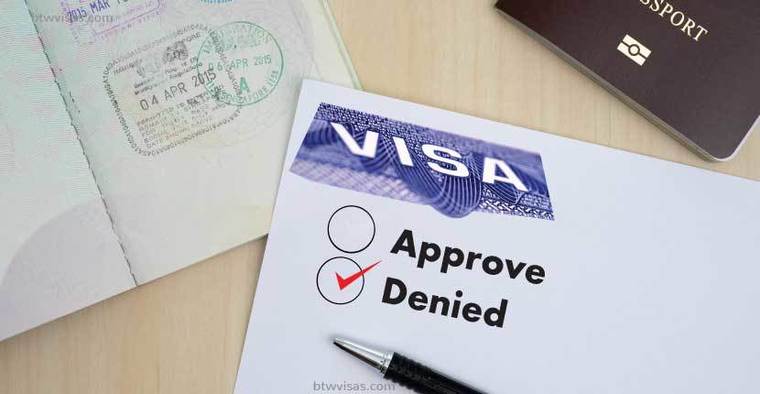”What if I don’t get my F-1 visa?”
“What if I’m stopped at the port of entry and asked to return?”
“Is it time to consider a backup plan in India?”
“Should I delete my instgram account?”
These are just a few of the questions I’ve been hearing—repeatedly—over the last few weeks. As a career counsellor and visa consultant, I’ve found myself addressing growing concerns from worried students and anxious parents, uncertain about what lies ahead in the ever-changing study abroad landscape. I understand the anxiety. And while I wish I could offer easy answers and guaranteed outcomes, the truth is: I can’t. The global education and immigration landscape is shifting rapidly, and sometimes unpredictably.
But here’s what I can do: Break it down to provide clarity to anxious families….
🌍 The Evolving Study Abroad Landscape
Traditionally, countries like the United States, Canada, the UK, and Australia have been the most sought-after destinations for Indian students. While these countries continue to welcome international talent, recent shifts in visa policies, post-study work opportunities, and immigration frameworks are forcing students to rethink their plans.
Some key changes in 2024–25 include:
1) USA (F-1 Visa):
❖ Visa interview appointments are now linked to the DS-160 confirmation number.
❖ Stricter scrutiny during visa interviews and heightened checks at the port of entry. Increased focus on clear academic intent and financial documentation.
❖ Social media profiles of applicants are to be made public for digital profiling.
❖ Interviews for visa renewals mandatory if the visa expired more than 12 months ago.
❖ A clear mandate by the US administration to not allow any kind of political activism or minor/major offense or crime. International students under the radar.
❖ Federal funding cuts for top research universities, leading to a possible decline in PhD applications.
❖ Introduction of Gold Card (USD 5 Million Direct purchase). EB-5 visa is most likely to be impacted.
❖ F-1 visa holders can only spend up to five consecutive months outside the US during their academic program unless they continue to be enrolled full time in their US university and return to the US to complete their program.
❖ F-1 visa students are now eligible for immigrant visas through EB (Employment-based) category.
❖ F-1 students seeking STEM OPT may be employed by startup companies
2) Canada:
❖ International Students can work 24 hours per week off-campus during academic terms and full-time during breaks without a work permit.
❖ As per the 2025–2027 Immigration Levels Plan, Canada’s temporary resident population will decrease over the next few years. Capping temporary workers & international students at 5% of the total population by 2028.
❖ Tighter limits on international student intake and Post-Graduation Work Permit (PGWP) eligibility.
❖ Increase in Francophone Immigration outside Quebec.
❖ Skilled and professional degree holders will have higher chances of securing a PR.
3) UK:
❖ International Students (excluding those on postgraduate research courses) are no longer permitted to bring family members (spouse & children) on a student visa.
❖ The required monthly maintenance funds for international students have increased since January 2025.
❖ BRP (Biometric Residence Permit) is no longer valid. Replaced by e-visas. Students will have to create their UKVI account.
❖ Proposed reduction in the standard length of the Graduate visa (for international students to stay on and work in the UK post study) from two years to 18 months, even for PhD students.
❖ Proposed increase in the standard qualifying period for permanent residence (ILR) from five to ten years.
4) Australia:
❖ Confirmation of Enrolment (COE) letter is required for the student visa application.
❖ Increased financial capacity – COEs require upfront part or full payment of tuition fees. Financial statements must show the parents’ annual combined income to be at least AUD 87,856 in the 12 months immediately before the application. Minimum living expenses requirement raised to AUD 29,710.
❖ Visa Application fee increased to AUD 1,600
❖ Australian immigration will cap the overall international student enrollment at 2,70,000 in 2025, with priority for higher education and research students.
❖ Increased requirement for higher English proficiency levels.
❖ The Genuine Temporary Entrant (GTE) requirement has been replaced with the Genuine Student (GS) requirement.
❖ Selective PR pathway.
Amidst these changes, students who were once confident of their study plans are now being advised to prepare for multiple scenarios including the possibility of visa rejections, deferrals, or denied entry.
✈ What Happens If Your Visa Is Rejected or You’re Turned Back?
Let’s address the big fears:
Visa Rejection: A visa denial doesn’t mean the end of your study abroad dreams. But it does require a careful review of why it happened—be it documentation, intent, finances, or answers during the interview. One may reapply or explore alternative countries or intakes.
Stopped at the Port of Entry: This is rarer but not impossible. US Customs and Border Protection (CBP) officers have the authority to deny entry if they suspect your intentions don’t match your visa category, and increased social media screening. This could lead to being sent back immediately.
INDIA – A Smart Back-Up or a First Choice?
India is rapidly emerging as a hub for global-standard education. With increased investment in higher education, academic reforms, global collaborations, and the National Education Policy (NEP) 2020 pushing innovation and flexibility, India’s universities are stepping up in both quality and global recognition.
India is home to top-ranked global programs in STEM, economics, liberal arts, law, management, and public policy. IITs, IIMs, IISc, NLSIU, and newer institutions like Ashoka University, KREA, Shiv Nadar, and FLAME University are raising the bar. Additionally, foreign universities like Deakin, University of Southampton, Illinois Tech, University of Liverpool, and a few others are launching campuses in India. Not to forget, affordability, accessibility to home, booming start-up eco-system, and strong campus placements is Advantage India! Undoubtedly, in the current times, not living in perpetual anxiety in an alien land is such a relief.
Having said that, studying abroad does more than just provide a world-class education; it opens doors to intangible benefits that shape students’ futures in ways that go beyond immediate returns. Besides robust & liberal education, cutting-edge research opportunities, distinguished faculty, experiential learnin, and long-term settlement pathway, what it brings to the student is intellectual curiosity, international exposure and diverse outlook, independent problem-solving skills, global alumni network, and personal growth.
The decision to study overseas or in India depends on your personal goals, financial situation, and long-term vision. But regardless of where you choose to study, remember that the benefits of higher education go far beyond the immediate costs or returns. Whether you’re in India or abroad, it’s the experiences, skills, and connections you build along the way that will ultimately define your future.
This moment calls for flexibility, awareness, and proactive planning. The goal is not just to get an offer letter or a visa, but to build a sustainable and rewarding career path. Whether that path starts in Boston or Bengaluru, London or Lucknow, New York or New Delhi, what matters is resilience, adaptability and confidence.
By
RITU WASON
CEO & Founder, eduCROSSROADS Consulting








